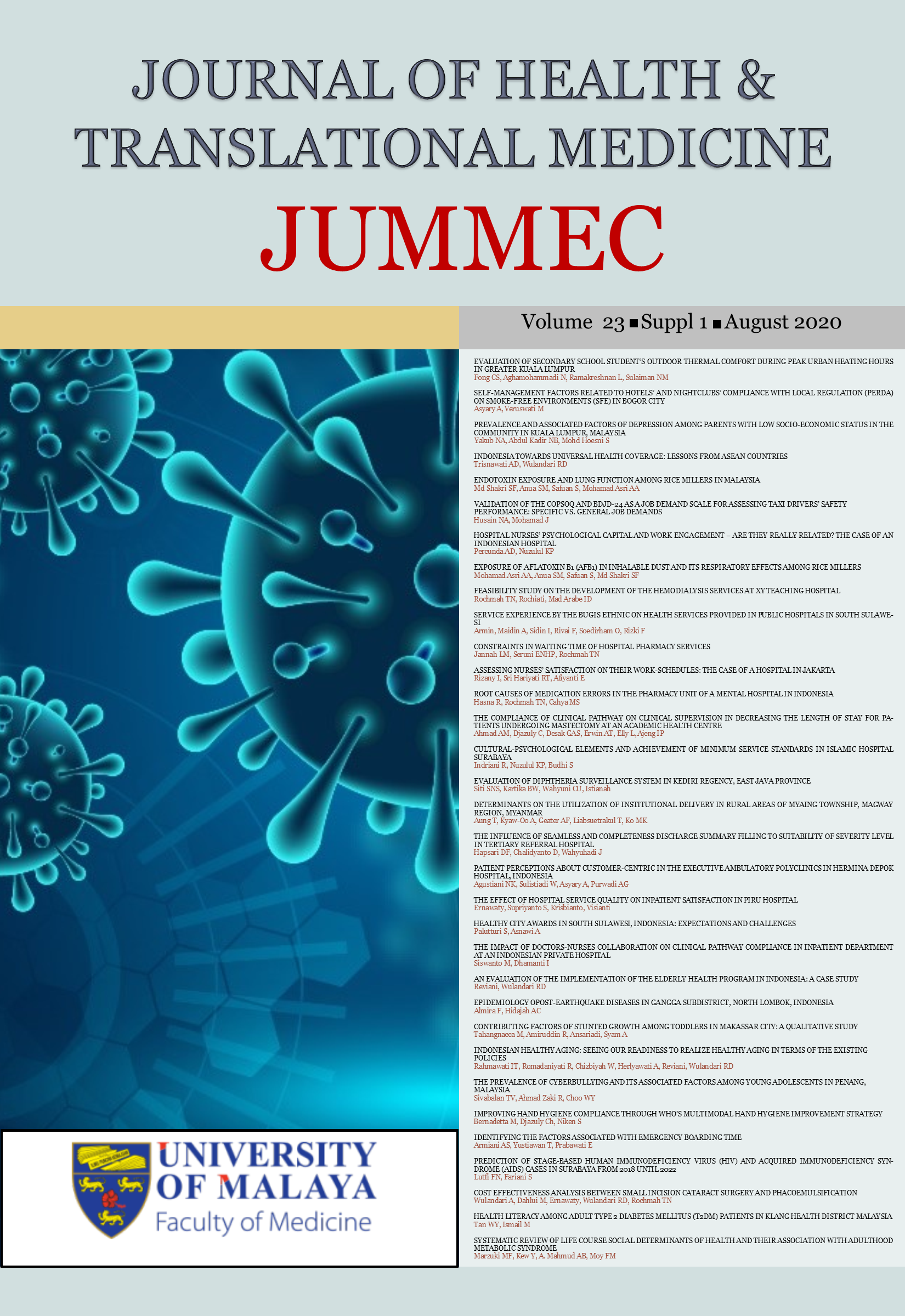HOSPITAL NURSES’ PSYCHOLOGICAL CAPITAL AND WORK ENGAGEMENT – ARE THEY REALLY RELATED? THE CASE OF AN INDONESIAN HOSPITAL
Keywords:
Nurse, Psychological capital, Work engagementAbstract
Background: Nurses’ excellent job performance is vital for the hospitals’ healthcare services, particularly in achieving a standardized medical care comprising of patient safety. Studies have noted this preference by asserting that psychological capital is one of the antecedents of excellent work performance. Yet, little has been focused on the work performance of nurses in this aspect.
Aims: This study thus aims to analyze the relationship of psychological capital and work engagement among nurses attached to an urban general hospital in Indonesia.
Methods: A questionnaire (PCQ-24) was used to measure the psychological capital variable and work engagement (Utrecht Work Engagement Scale) among 165 clinical nurses working in the inpatients’ ward. The simple random sampling approach was applied and a total of 91 questionnaires were found to be suitable for analysis. The descriptive values and linear regression were utilized for detecting the correlation coefficients of each variable.
Results: Findings indicate that most of the respondents were females (71.4%) who were mainly aged between 31-39 years old (42.9%) and the highest component in their psychological capital was hope (64.8%) while their work engagement was vigor (82.4%). Overall, it can be said that psychological capital was significantly correlated to vigor and dedication in work engagement (p<0.05). There was no correlation between hope (p=0.104), and resilience (p=0.159) with absorption of work engagement. Conclusion: Psychological capital variables were correlated to work engagement except for some variables. Low absorption in the nurses’ work engagement could be caused by their high work load at hospitals. Nurses’ job characteristics at the hospitals may be the cause of this finding.
Downloads
Downloads
Published
Issue
Section
License
All authors agree that the article, if editorially accepted for publication, shall be licensed under the Creative Commons Attribution License 4.0 to allow others to freely access, copy and use research provided the author is correctly attributed, unless otherwise stated. All articles are available online without charge or other barriers to access. However, anyone wishing to reproduce large quantities of an article (250+) should inform the publisher. Any opinion expressed in the articles are those of the authors and do not reflect that of the University of Malaya, 50603 Kuala Lumpur, Malaysia.


